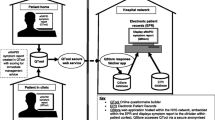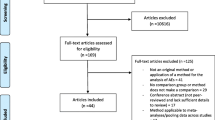Abstract
Background: The collection of adverse event data is an important component of clinical trials, but it is not clear whether solicited or unsolicited collection methods are better at distinguishing drug effects from the effects of placebo. The objective of this analysis is to compare the reporting rates and the ability to detect drug-placebo differences with spontaneous versus solicited adverse event collection methods.
Methods: Adverse events were collected by spontaneous (unsolicited) reporting and by structured questionnaires in three randomised, double-blind clinical trials. For both spontaneous and solicited adverse event collection methods, a drug/placebo (D/P) reporting ratio was computed by dividing the reporting rate for the experimental drug by the reporting rate for placebo for each adverse event. An index (Sp-So index) was calculated by dividing the spontaneous D/P ratio by the solicited D/P ratio. A number >1.0 indicates that the spontaneous adverse event collection method is more effective in distinguishing the drug from placebo and a number <1.0 suggests that the solicited adverse event collection method is more effective in distinguishing the drug from placebo.
Results: Reporting rates were greater when events were solicited than when the spontaneous reporting approach was used. The Sp-So index was >1.0 for 22 of the 29 (75.9%) events examined, suggesting that spontaneous collection of adverse events is more effective in distinguishing drug effect from placebo than the solicited approach. However, more statistically significant differences between drug and placebo were detected by the solicited method (nine events) than the spontaneous method (five events). This is due, in part, to the fact that differences in the percentages of adverse events between drug and placebo (rather than ratios of event rates) were more often greater when the solicited approach was used.
Conclusions: As expected, adverse events collected by solicitation leads to higher reporting rates. However, it is not clear that solicitation of events leads to greater ability to detect drug-placebo differences. By using a ratio to assess drug-placebo differences, spontaneous reporting provided larger drug-placebo differences more often than solicitation.


Similar content being viewed by others
References
National Institute of Mental Health (NIMH). STESS: Subjective Treatment Emergent Symptoms Scale. Psychopharmacology Bulletin Vol 21 (Issue No. 4). Rockville (MD): National Institute of Mental Health, 1985: 1073–5
Barkley RA, McMurray MB, Edelbrock CS, et al. Side effects of methylphenidate in children with attention deficit hyperactivity disorder: a systemic, placebo-controlled evaluation. Pediatrics 1990; 86(2): 184–92
Stieglitz RD, Fahndrich E, Helmchen H. The AMDP system. In: Mezzich JE, von Cranach M, editors. The international classification in psychiatry: unity & diversity. New York: Cambridge University Press, 1988: 180–204
Levine J, Schooler NR. Strategies for analyzing side effect data from SAFTEE: a workshop held fall 1985 in Rockville, Maryland. Psychophamacol Bull 1986; 22(2): 343–81
Rabkin JG, Markowitz JS, Ocepek-Welikson K, et al. General versus systematic inquiry about emergent clinical events with SAFTEE: implications for clinical research. J Clin Psychopharmacol 1992; 12(1): 3–9
Levine J, Schooler NR. General versus specific inquiry with SAFTE [letter]. J Clin Psychopharmacol 1992; 12(6): 448
Michelson D, Faries D, Wernicke J, et al. Atomoxetine in the treatment of children and adolescents with attention-deficit/hyperactivity disorder: a randomized, placebo-controlled, dose-response study. Paediatrics 2001; 108(5): e83
Michelson D, Adler L, Spencer T, et al. Atomoxetine in adults with ADHD: two randomized, placebo-controlled studies. Biol Psychiatry 2003; 53(2): 112–20
Data on file (unpublished), Eli Lilly and Company
US Department of Health and Human Services. Coding symbols for thesaurus of adverse reaction terms. 3rd ed. Rockville (MD): Department of Health and Human Services, Food and Drug Administration, Center for Drug and Biologics, Division of Drug and Biological Experience, 1995
Brown EG, Wood L, Wood S. The medical dictionary for regulatory activities (MedDRA). Drug Saf 1999; 20(2): 109–17
Chernick MR. Bootstrap methods: a practitioner’s guide. New York: John Wiley & Sons Inc., 1999: 53
Acknowledgements
This study was conducted as part of the authors’ employment at Eli Lilly and Company.
Author information
Authors and Affiliations
Corresponding author
Rights and permissions
About this article
Cite this article
Wernicke, J.F., Faries, D., Milton, D. et al. Detecting Treatment Emergent Adverse Events in Clinical Trials. Drug-Safety 28, 1057–1063 (2005). https://doi.org/10.2165/00002018-200528110-00006
Published:
Issue Date:
DOI: https://doi.org/10.2165/00002018-200528110-00006




